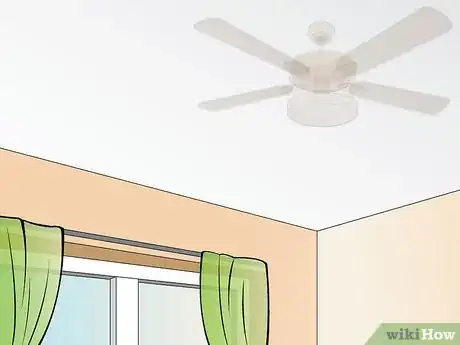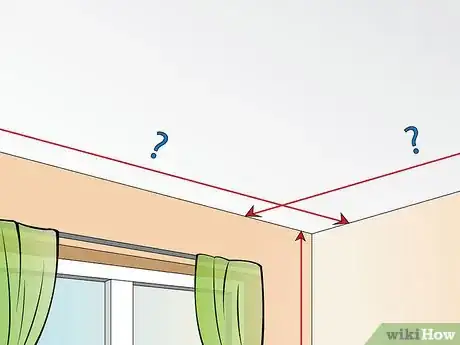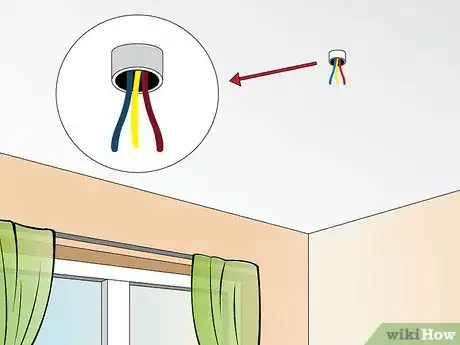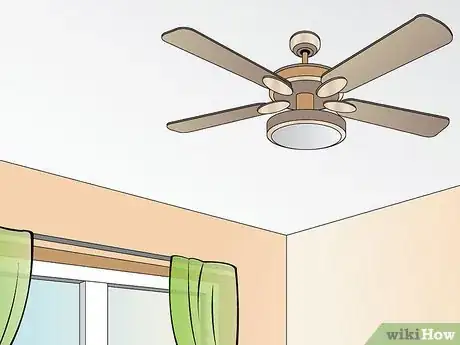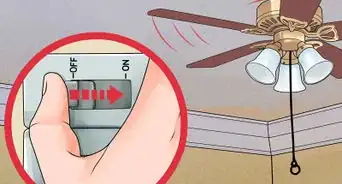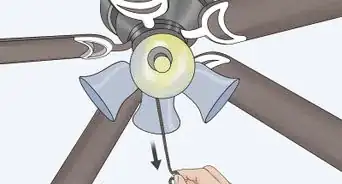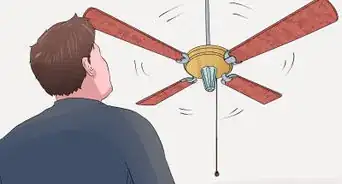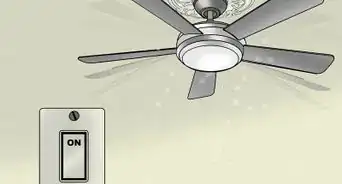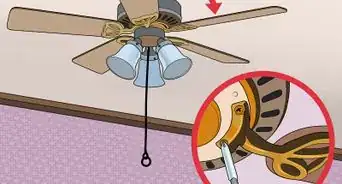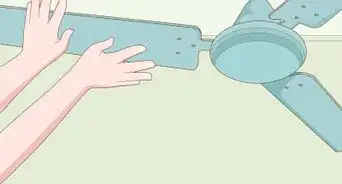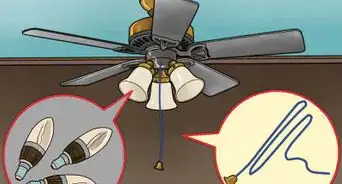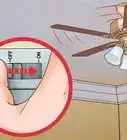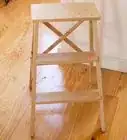This article was co-authored by Lui Colmenares. Lui Colmenares is a handyman and licensed home improvement contractor for Mr. Handy NYC based in New York City, New York. Lui is trained and educated as an industrial engineer and specializes in carpentry, painting, and general handyman work such as mounting TVs, doorknob and deadbolt installation, furniture assembly, tile repair, and grouting. Mr. Handy NYC prides itself on quality work performed with speed, skill, and punctuality.
wikiHow marks an article as reader-approved once it receives enough positive feedback. In this case, several readers have written to tell us that this article was helpful to them, earning it our reader-approved status.
This article has been viewed 248,750 times.
Selecting the right ceiling fan isn't just about choosing the right color and style. There are some key factors that you must consider your decision in order to get the maximum efficiency and enjoyment from your fan.
Steps
-
1Decide where you want to install the fan. Most fans are placed in the center of the room, allowing smooth air flow throughout the room. However, larger rooms may be better suited for 2 fans for optimal air flow. For safety reasons, do not install a fan over a bed.[1]
-
2Consider various room factors:[2]
- Room Size
- The diameter of the ceiling fan will be determined by your area. When you buy a ceiling fan, usually there is a recommended area already stated.
- 30" ceiling fan for rooms up to 8' x 10' (small bedrooms, walk-in closets, smaller kitchens)
- 42" ceiling fan for rooms up to 12' x 12' (medium bedrooms, kitchens, small recreation areas)
- 52" ceiling fan for rooms up to 18' x 20' (large bedrooms, family rooms, great rooms, dining rooms)
- Ceiling Height
- Low ceiling: Hugger mount or traditional- mount without down rod
- Standard 8' ceiling: traditional- mount with down rod
- 9' or Higher ceiling: Extended down rod
- Sloped ceiling: Extended down rod
- You will need to check the floor to ceiling height of the blades. Make sure you take into account the distance that the fan hangs from the ceiling.
- For safety, a minimum height of 7’-9’ is recommended. If your fan does not meet the 7’ recommendation, you can look into a low-ceiling mount. Building codes in your area may require this.
- For optimum air circulation it is most efficient to have the fan blade 8' to 9' above the floor. For higher ceilings see the chart for recommended down rod length.
Advertisement - Room Size
-
3Think about electricity. Since fans require the same amount of power as most ceiling fixtures, the electrical circuit shouldn’t be overloaded.[3]
- If the fan includes a light fixture, ensure that the circuit is able to handle both the fan and light. If your circuit will not hold this capacity then a new circuit must be run from the home’s main panel to the fan.
- If there was not a preexisting fixture, you will need to create a place to hang the fan. If your home is not wired properly, some fans do have swag wiring that can be plugged into a wall outlet, but ceiling installation is preferred.
- It is easiest to install ceiling bracing and electrical wiring during new home construction even if you will be installing a fan at a later time.
- Consulting an electrician is always your best option.
-
4Choose a good quality fan. A cheap fan is more trouble than it is worth. Not only will a cheap fan wobble, but a poor-quality fan will not circulate as much air at a given RPM.[4]
- While speed helps control how much air is moved, blade pitch (angle between blade and horizontal) and design also play a role. Good quality fans boast motors that have more power, so as to allow for greater blade pitch. Cheap fans, on the other hand, have motors that are not strong enough to handle the air resistance associated with greater blade pitch, requiring the manufacturer to lower the blade pitch to avoid burning out the motor.
- Also, cheap fans produce a humming noise. Remember that a good-quality fan will not always be priced unreasonably high. Even Hunter ceiling fans, which can be found at stores such as Lowes or Home Depot, are of decent quality for reasonable price.
Community Q&A
-
QuestionShould I be concerned about the fan blades covering my recessed lights as it spins?
 Community AnswerRecessed lights should not be to much of a problem. The biggest problem with having lights behind the ceiling fan is that the light would flicker when the fan and light are on at the same time.
Community AnswerRecessed lights should not be to much of a problem. The biggest problem with having lights behind the ceiling fan is that the light would flicker when the fan and light are on at the same time. -
QuestionIs a 3-blade fan better than a 5-blade fan?
 Community AnswerA 3-blade fan will take longer to make the room cooler, whereas more wind is able to pass through a 5-blade fan. A 5-blade fan is better at creating wind.
Community AnswerA 3-blade fan will take longer to make the room cooler, whereas more wind is able to pass through a 5-blade fan. A 5-blade fan is better at creating wind. -
QuestionIs a 60" ceiling fan too big?
 Community AnswerNo.
Community AnswerNo.
Warnings
- Always mount a ceiling fan with the blades at least 7 feet (2.1 m) above the floor, even if this requires a close-to-ceiling mount. A ceiling fan hanging too low can hit somebody's head and cause injury. Also, building codes in many jurisdictions prohibit ceiling fans from being mounted with the blades less than 7 feet (2.1 m).⧼thumbs_response⧽
References
- ↑ https://www.homedepot.com/c/ab/best-ceiling-fans/9ba683603be9fa5395fab90b9b26067
- ↑ https://www.houzz.com/magazine/how-to-choose-a-ceiling-fan-for-comfort-and-style-stsetivw-vs~98090656
- ↑ https://www.thisoldhouse.com/fans/21018783/how-to-size-up-a-ceiling-fan
- ↑ https://www.houzz.com/magazine/how-to-choose-a-ceiling-fan-for-comfort-and-style-stsetivw-vs~98090656
